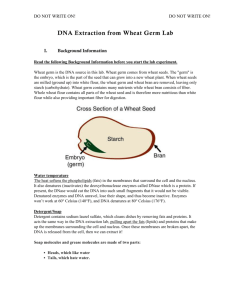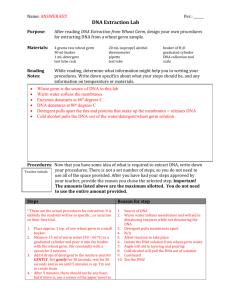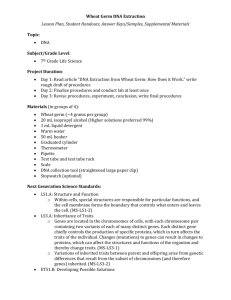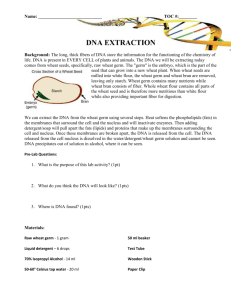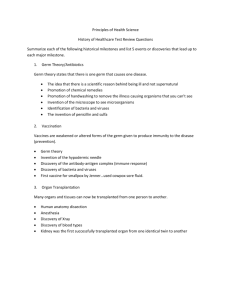16. DNA Extraction Reading
advertisement
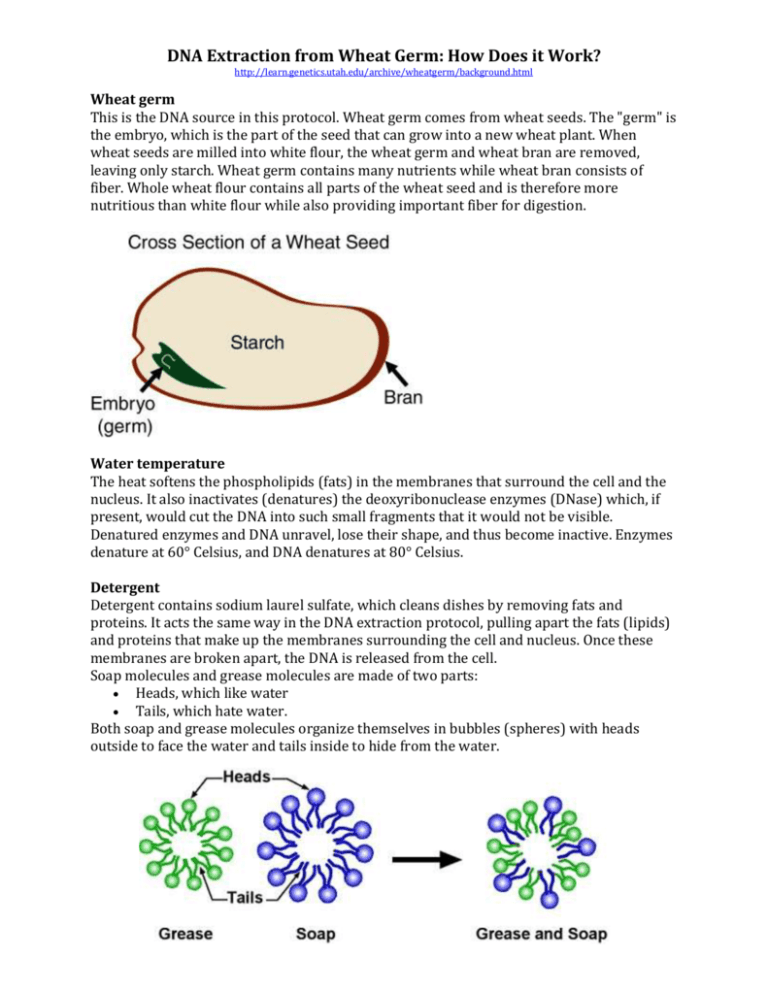
DNA Extraction from Wheat Germ: How Does it Work? http://learn.genetics.utah.edu/archive/wheatgerm/background.html Wheat germ This is the DNA source in this protocol. Wheat germ comes from wheat seeds. The "germ" is the embryo, which is the part of the seed that can grow into a new wheat plant. When wheat seeds are milled into white flour, the wheat germ and wheat bran are removed, leaving only starch. Wheat germ contains many nutrients while wheat bran consists of fiber. Whole wheat flour contains all parts of the wheat seed and is therefore more nutritious than white flour while also providing important fiber for digestion. Water temperature The heat softens the phospholipids (fats) in the membranes that surround the cell and the nucleus. It also inactivates (denatures) the deoxyribonuclease enzymes (DNase) which, if present, would cut the DNA into such small fragments that it would not be visible. Denatured enzymes and DNA unravel, lose their shape, and thus become inactive. Enzymes denature at 60° Celsius, and DNA denatures at 80° Celsius. Detergent Detergent contains sodium laurel sulfate, which cleans dishes by removing fats and proteins. It acts the same way in the DNA extraction protocol, pulling apart the fats (lipids) and proteins that make up the membranes surrounding the cell and nucleus. Once these membranes are broken apart, the DNA is released from the cell. Soap molecules and grease molecules are made of two parts: Heads, which like water Tails, which hate water. Both soap and grease molecules organize themselves in bubbles (spheres) with heads outside to face the water and tails inside to hide from the water. When soap comes close to grease, it captures it, forming a greasy soapy ball. A cell's membranes have two layers of lipid (fat) molecules with proteins going through them. When detergent comes close to the cell, it captures the lipids and proteins and releases the DNA. Alcohol The DNA released from the cell nucleus is dissolved in the water/detergent/wheat germ solution and cannot be seen. DNA precipitates out of solution in alcohol, where it can be seen. Besides allowing us to see the DNA, the alcohol separates the DNA from the other cell components, which are left behind in the water solution. The temperature of the alcohol can affect the yield of DNA. Colder alcohol helps the DNA precipitate (solidify and appear) more quickly.

